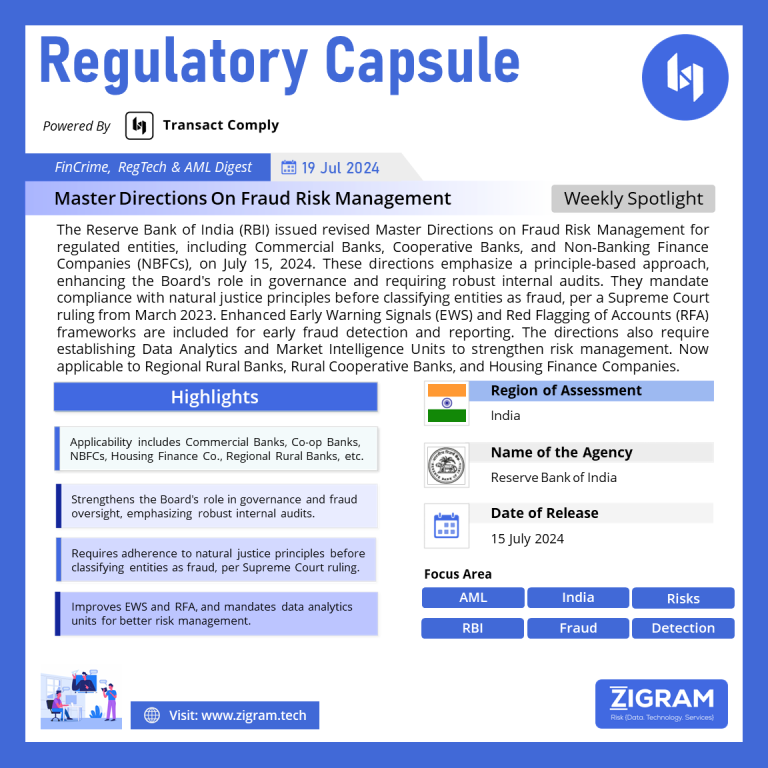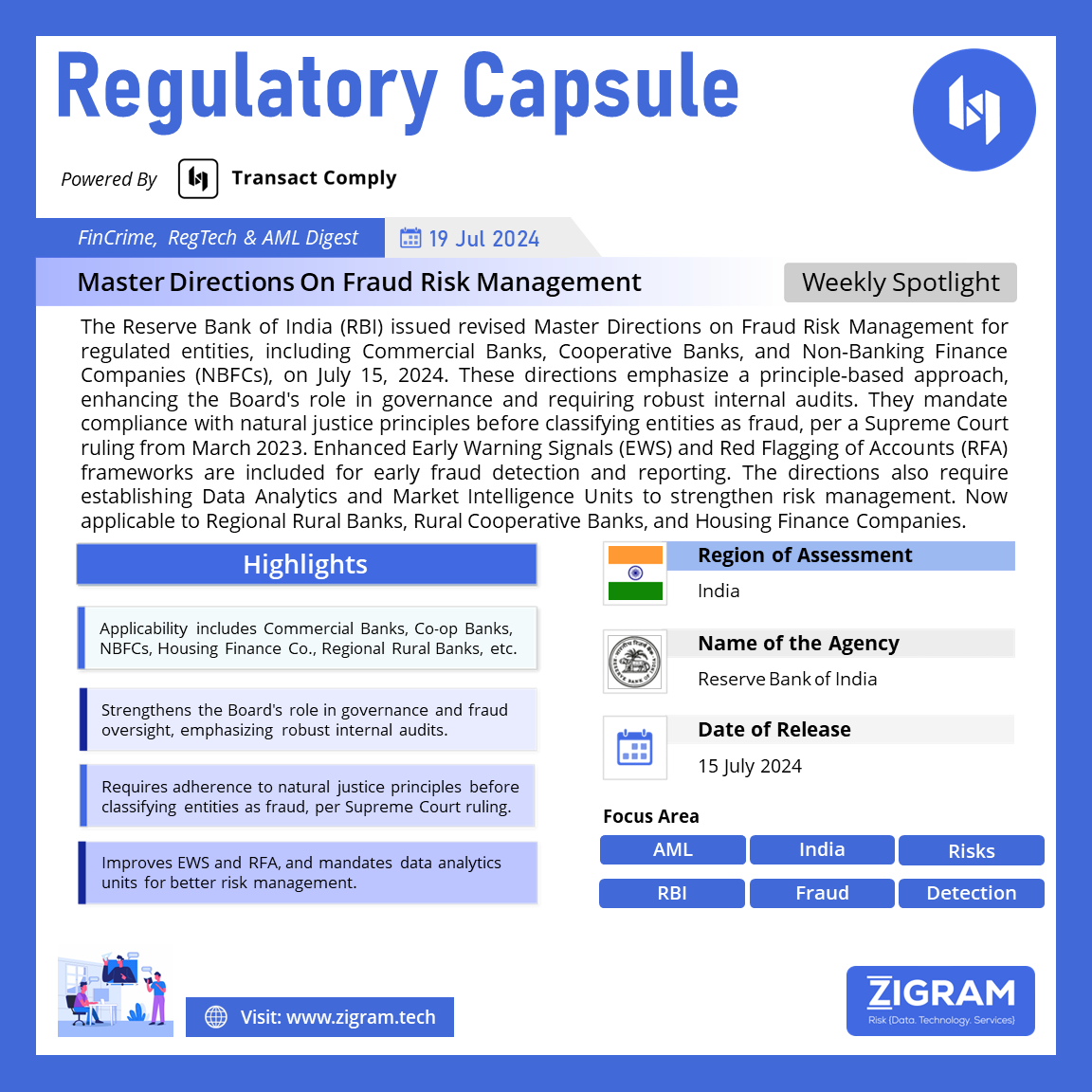Published Date:
Regulation Name: Master Directions On Fraud Risk Management
Publishing Date: 15 July 2024
Region: India
Agency: Reserve Bank of India
The Reserve Bank of India (RBI) has issued the Reserve Bank of India (Fraud Risk Management in NBFCs) Directions, 2024. Effective from July 15, 2024, these directions aim to enhance the prevention, early detection, and timely reporting of fraud incidents within Non-Banking Financial Companies (NBFCs), including Housing Finance Companies, with assets of INR 5 billion and above.
Scope and Applicability
The new directions apply to all NBFCs in the Upper Layer, Middle Layer, and Base Layer, collectively referred to as “Applicable NBFCs.” The primary objective is to establish a comprehensive framework for fraud risk management, ensuring that frauds are promptly reported to Law Enforcement Agencies (LEAs), RBI, and the National Housing Bank (NHB).
Key Highlights of the Directions
1. Governance Structure
– Board-Approved Policy: Applicable NBFCs must have a Board-approved fraud risk management policy. This policy should outline the roles and responsibilities of the Board, Board Committees, and Senior Management. It must also ensure compliance with natural justice principles.
– Show Cause Notice: A detailed Show Cause Notice (SCN) must be issued to persons or entities under fraud investigation, providing them at least 21 days to respond.
– Special Committee of the Board: Applicable NBFCs are required to form a ‘Special Committee of the Board for Monitoring and Follow-up of cases of Frauds’ (SCBMF), headed by an Independent Director. NBFCs in the Middle and Base Layers have the option to form a Committee of Executives (CoE) instead.
2. Early Warning Signals (EWS) Framework
– Implementation and Oversight: NBFCs in the Upper and Middle Layers must implement a robust EWS framework overseen by a Board-Level Committee.
– Monitoring Indicators: These NBFCs must identify and periodically review early warning indicators to detect potential fraud in credit facilities, loan accounts, and other financial transactions.
3. Fraud Detection and Reporting
– Internal and External Audits: In cases of suspected fraud, Applicable NBFCs must conduct internal or external audits. Policies for engaging external auditors should be Board-approved.
– Staff Accountability: NBFCs must examine staff accountability in fraud cases promptly. Public sector NBFCs must refer cases involving INR 30 million and above to the Advisory Board for Banking and Financial Frauds (ABBFF).
4. Penal Measures and Treatment of Fraudulent Accounts
– Debarment: Persons or entities classified as fraudsters will be debarred from raising funds or seeking credit facilities from RBI-regulated entities for five years post-repayment or settlement.
– Resolution Plans: If an entity undergoes resolution under the Insolvency and Bankruptcy Code (IBC) or RBI’s resolution framework, the NBFC must reassess the fraud classification.
5. Reporting to Law Enforcement and RBI
– Immediate Reporting: Incidents of fraud must be reported to appropriate LEAs immediately and to RBI within 14 days of classification.
– Overseas Reporting: Fraud incidents at overseas branches must be reported to local LEAs in accordance with host country regulations.
6. Other Provisions
– Legal Audit: Title deeds and related documents for credit facilities of INR 10 million and above must undergo periodic legal audits.
– Role of Auditors: Auditors should report suspected fraudulent transactions immediately to senior management or the Audit Committee.
– Data Security: The EWS system must ensure the integrity and security of customer data and facilitate real-time transaction monitoring.
The RBI’s new directions for fraud risk management in NBFCs aim to create a more transparent, accountable, and secure financial environment. By mandating comprehensive policies, stringent audits, and timely reporting mechanisms, the RBI seeks to bolster the resilience of NBFCs against fraud, thereby protecting stakeholders and maintaining the integrity of the financial system.
Read the Master Direction here.
- #RBI
- #FraudRiskManagement
- #NBFCs
- #FinancialSecurity
- #FraudPrevention
- #Governance
- #EarlyWarningSystem
- #FinancialRegulation
- #RBIRegulations
- #Finance
- #NonBankingFinancialCompanies
- #RiskManagement
- #FinancialIntegrity

